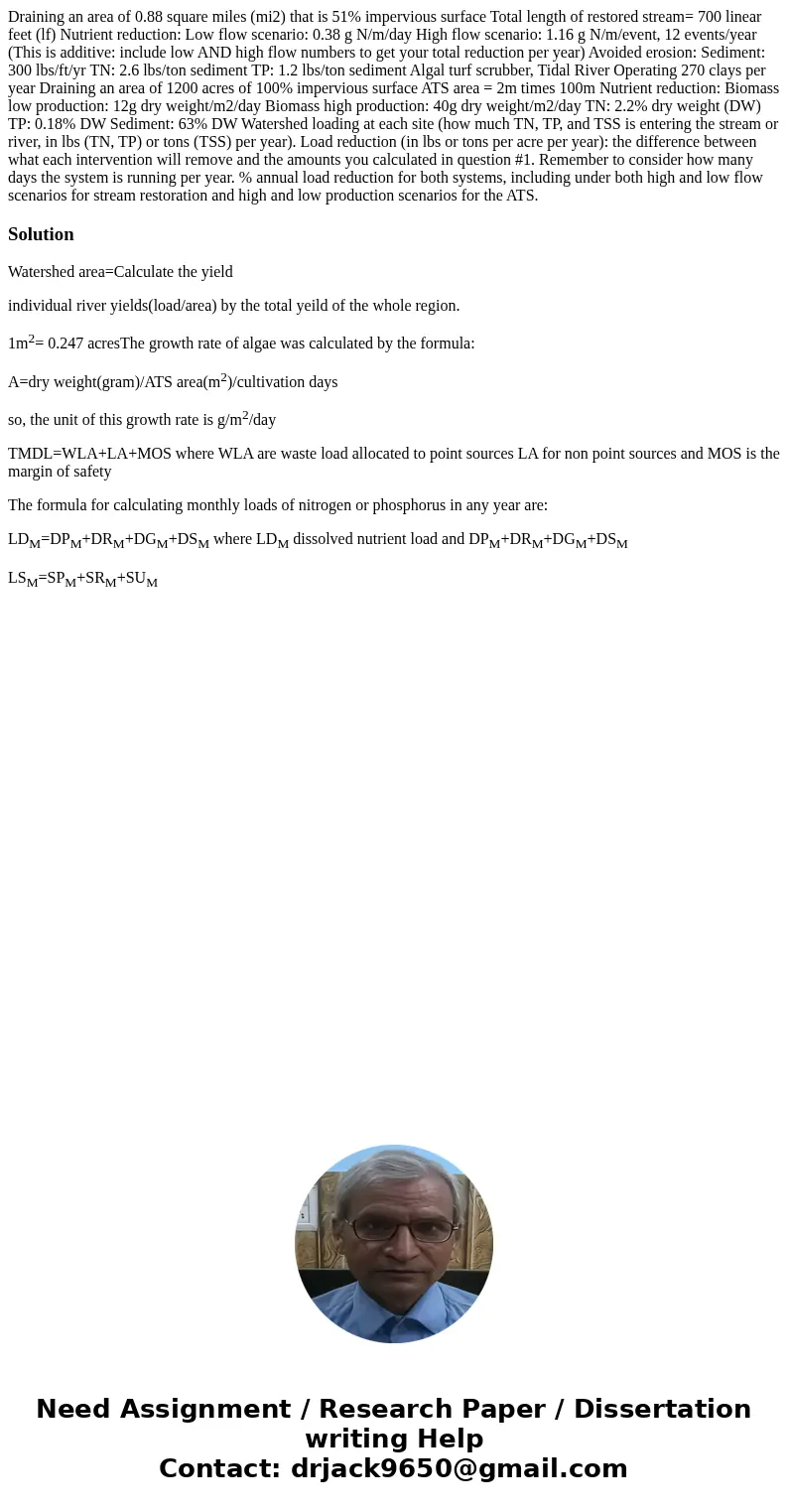Draining an area of 088 square miles mi2 that is 51 impervio
Draining an area of 0.88 square miles (mi2) that is 51% impervious surface Total length of restored stream= 700 linear feet (lf) Nutrient reduction: Low flow scenario: 0.38 g N/m/day High flow scenario: 1.16 g N/m/event, 12 events/year (This is additive: include low AND high flow numbers to get your total reduction per year) Avoided erosion: Sediment: 300 lbs/ft/yr TN: 2.6 lbs/ton sediment TP: 1.2 lbs/ton sediment Algal turf scrubber, Tidal River Operating 270 clays per year Draining an area of 1200 acres of 100% impervious surface ATS area = 2m times 100m Nutrient reduction: Biomass low production: 12g dry weight/m2/day Biomass high production: 40g dry weight/m2/day TN: 2.2% dry weight (DW) TP: 0.18% DW Sediment: 63% DW Watershed loading at each site (how much TN, TP, and TSS is entering the stream or river, in lbs (TN, TP) or tons (TSS) per year). Load reduction (in lbs or tons per acre per year): the difference between what each intervention will remove and the amounts you calculated in question #1. Remember to consider how many days the system is running per year. % annual load reduction for both systems, including under both high and low flow scenarios for stream restoration and high and low production scenarios for the ATS.
Solution
Watershed area=Calculate the yield
individual river yields(load/area) by the total yeild of the whole region.
1m2= 0.247 acresThe growth rate of algae was calculated by the formula:
A=dry weight(gram)/ATS area(m2)/cultivation days
so, the unit of this growth rate is g/m2/day
TMDL=WLA+LA+MOS where WLA are waste load allocated to point sources LA for non point sources and MOS is the margin of safety
The formula for calculating monthly loads of nitrogen or phosphorus in any year are:
LDM=DPM+DRM+DGM+DSM where LDM dissolved nutrient load and DPM+DRM+DGM+DSM
LSM=SPM+SRM+SUM

 Homework Sourse
Homework Sourse